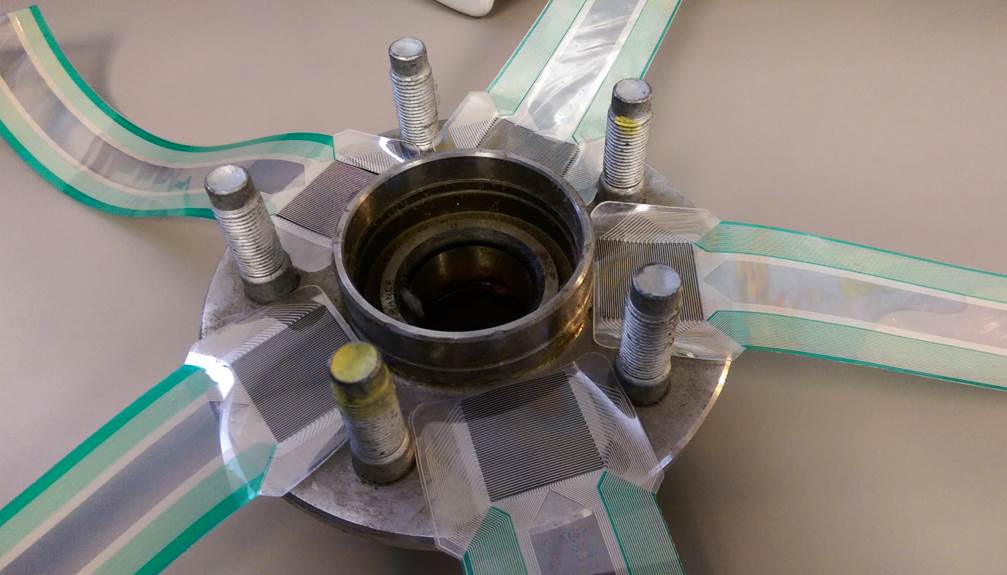Reducing Automotive Noise, Vibration, and Harshness (NVH) with Pressure Analysis
 Figure 1: A conceptual method to position pressure mapping sensors around a wheel rim assembly.Noise, vibration, and harshness (NVH) are subjective yet critical measures of the driving experience. One key way automobile manufacturers can address potential NVH issues is by balancing the contact between three important vehicle components – the rotor, the wheel hub, and the wheel.
Figure 1: A conceptual method to position pressure mapping sensors around a wheel rim assembly.Noise, vibration, and harshness (NVH) are subjective yet critical measures of the driving experience. One key way automobile manufacturers can address potential NVH issues is by balancing the contact between three important vehicle components – the rotor, the wheel hub, and the wheel.
Wheel hub assemblies are made of steel. A brake rotor, made of a different type of steel with a different stiffness, is mounted to it. An aluminum wheel/tire rim follows this. This means there are three different metals, each with a different stiffness in contact with one another. When the lug nuts are tightened using the standard star-pattern torque process to achieve equal torque, it is still likely that there will be uneven loading and material bending and stress on the wheel and rotor due to binding and interface friction.
This uneven loading on the rotor and wheel hub can cause a rotor to go out of round as the tire rotates, turns are made, and brakes are applied leading to NVH issues.
Seeking a more effective way to reduce NVH and evaluate the contact of these components, an automobile manufacturer consulted with Tekscan to develop a method to measure pressure distribution between the wheel and rotor, and between the rotor and hub. As shown in Figure 1 – an idea that eventually led to the development of a custom sensor – an array of pressure sensors were positioned within all gaps between the five lugs on the wheel hub assembly. This sensor was used to measure the pressure distribution between the wheel and rotor on to the wheel hub as the bolts were tightened.
With the sensor in place, the tire could be mounted and tightened to the wheel hub to display real-time pressure distribution across all sensing points. Any indication of uneven pressure could signal a flaw in the design or part, and signal possible NVH issues in the future.
Hover over the icons below to explore other automotive pressure mapping applications:

